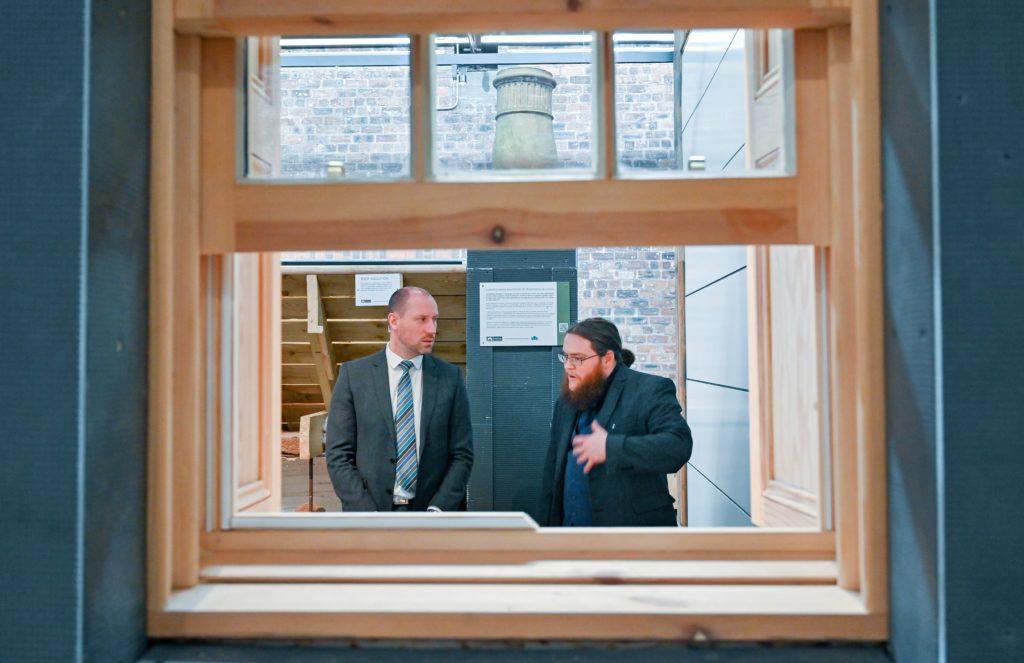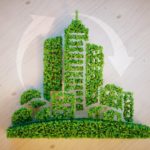Sector - Education & Training
Heritage keystone of Scotland’s green recovery

Heritage can be the keystone of Scotland’s green recovery according to Historic Environment Scotland (HES).
Setting out its vision with the publication of a Green Recovery Statement for the historic environment, HES shows how Scotland can use its past heritage to support its future – using its knowledge of traditional materials, construction methods and skills of how to live sustainably.
Key areas that can make a vital contribution to sustainable economic recovery across policy agendas, include traditional skills and jobs, digital connectivity and responsible tourism.
Repair, reuse and retrofit
The statement outlines how making use of Scotland’s heritage through the repair, reuse and retrofit of the existing built environment can support sustainable living and reduce carbon emissions. In addition, the maintenance of traditional buildings delivers good, green jobs and skills, and supports heritage -led regeneration to create resilient communities with a distinct sense of place.
The statement has been published to galvanise action towards green recovery; help organisations and groups showcase the work they are already doing in these areas and demonstrate the potential of the sector to provide the solutions required for Scotland’s transition to a low-carbon, climate-resilient economy.
Warmworks qualification
Minister for Culture, Europe and International Development Neil Gray welcomed the statement as he visited the Engine Shed, Scotland’s national conservation centre. He met learners from Warmworks – the managing agent of the Scottish Government’s national fuel poverty scheme – as HES begins delivery of the qualification Level 3 Award in Energy Efficiency Measures for Older and Traditional Buildings.
This qualification is a key component of HES’s commitment to supporting net-zero through the retrofit of traditional buildings.
The course is included in the requirements for various standards related to retrofit and will directly support the work of Warmworks and similar organisations to provide insulation and efficient heating to households struggling with the cost of high energy bills. It will provide learners with expert advice and guidance on the range of energy efficiency measures available for older and traditional buildings and how these can be appropriately installed.
Retrofit key to reducing carbon
The qualification will also help ensure the wider construction industry is equipped with the skills required for the retrofit of Scotland’s existing built environment, which will play a key role in reducing carbon emissions and achieving climate goals. Traditional buildings make up around 20% of the nation’s housing stock, making it crucial to reduce the energy they use and the carbon they emit in order to meet national net-zero targets. Repairing, reusing and retrofitting these existing buildings contributes to a circular economy, which offers a sustainable alternative to building new, and one which also supports green jobs, develops traditional skills and materials and boosts local supply chains.
Green recovery
Alex Paterson, Chief Executive of HES, said: “Scotland faces a number of challenges on the road to sustainable economic recovery and net-zero, but we also have an opportunity to champion our historic environment and its potential to deliver solutions and provide a source of resilience for communities as we work together towards a green recovery.
“We want our Green Recovery Statement to be a tool for the sector to help articulate the ways in which the historic environment supports green principles and contributes to key policy agendas. We want to give the sector a collective voice to better inform policymaking and infrastructure investment decisions.
“Our new Energy Efficiency course is an excellent example of this vision in action, showing how we can collaborate to develop and deliver vital skills that will make a real difference to communities across Scotland.
“We look forward to building and strengthening partnerships, both within the historic environment sector and with wider Scottish society, as we work towards our vision of a sustainable Scotland with a flourishing historic environment at its centre.”
If you would like to read more stories like this, then please click here
Related Articles
More Education & Training News
- Flagship Ulster University capital build project procurement opportunity now live
9 Oct 25
Submit a tender now.
- RAAC removal progress
26 Sep 25
The government has announced significant progress in its RAAC programme.
- Government urged to ringfence higher and degree apprenticeship funding
27 Aug 25
The University Vocational Awards Council (UVAC) is urging the government to ringfence its planned Growth and Skills






